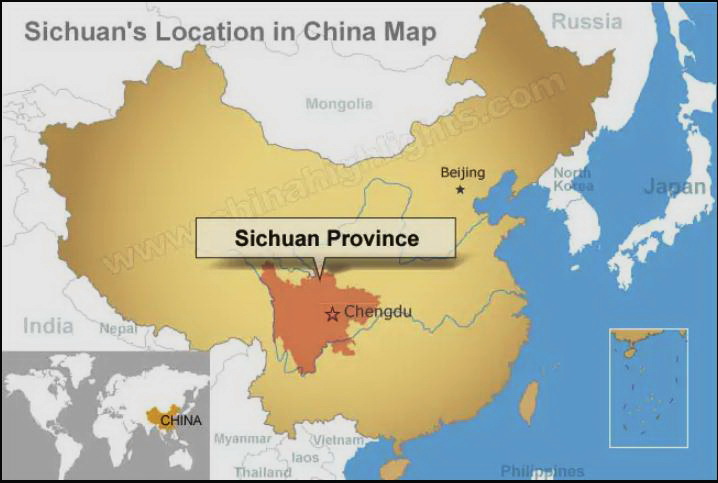1. Maps
I’m in Chungdu, the fifth largest city of China and capital of Sichuan Province. Chun Xi Road is in the heart of the city, which was a relatively small city more than 100 years ago when Westerners first established a YMCA. From my location at Sichuan Normal University, I would take the bus downtown, most often with students who were more than eager to provide guidance and practice English. Purpose would normally be to soak up some of the fascinating sights of life in China.
 The map here shows my walking route from our bus stop up through Chun Xi Lane, the Sun Zhongshan Square, and northward to the top end of Chun Xi North Road where we find the historic YMCA site.
The map here shows my walking route from our bus stop up through Chun Xi Lane, the Sun Zhongshan Square, and northward to the top end of Chun Xi North Road where we find the historic YMCA site.
More_maps...
Less...
2. First views of Chun Xi Road
Views are… 1) from bottom, looking northward towards Zhongshan Square, 2) top-end of road still looking northward showing pedestrian overpass on Zong Fu Road, and 3) view from overpass looking south. Maybe just 50 meters/yards down this street we find the entrance to Jinhuaguan lane and the YMCA site.
3. Memorial to Sun Zhongshan
Visitors to China soon discover that most every city and town in China names a street or a park as Zhongshan (meaning great mountain). It is the honourific name given to the first president of the Republic of China, Sun Yat-sen. His statue here dominates Zhongshan Square. He continues to be honoured as the father of modern China. [His history and contribution to China can be found in many online articles such as on Wikipedia.]
4. Business
Chun Xi Road is a commercial and shopping centre for Chengdu. At every turn there are stores, often with staff in doorways enticing in shoppers.
5. Reminders of China history and culture
In Chinese cities streets are commonly adorned with statues and relief art celebrating past culture and its transition into a modern state. The images often include some humour, such as the image of books strewn on the ground as a mother confronts an indulgent grandmother. The tough days of Chairman Mao and the Cultural Revolution are also popular themes, recognized always as a necessary step in the modernization of China. (Note the image of the woman clutching a copy of Mao’s Little Red Book.) Finally, below, we have the Mandarin official (Qin Dynasty of late 1800s) oblivious to the changing times. (My student guides this day insisted they take my picture next to him.)
6. A hard-luck story?
From time to time in China, we will encounter beggars, or sometimes such as in this case, what appears to be a sophisticated couple who want to tell their story and solicit help. Is it a case of bad luck or a protest against a perceived injustice? Many who pass by give donations.
7. More images from Jinhuaguan lane
First here are more details from the entrance to the historic lane featured earlier.
An imposing masonry structure faces the YMCA building in what was at one time the possible heart of British and colonial powers in Chengdu. There is no marker on the building to reveal its history. Few Chinese buildings were made of stone in the old days, so what indeed might be its history?
The young women with me, however, are quick to note the name over the door and were keen to peek inside and have their photos taken below the “I Do” sign. Wedding give rise to a significant commercial industry in China, and this is obviously a shop dedicated to weddings. On another visit, it was delightful to see the shop in operation and find subjects who fit the mood just perfectly.
No doubt some of my students left the site with dreams of their own.
First published: 2022/08/27































